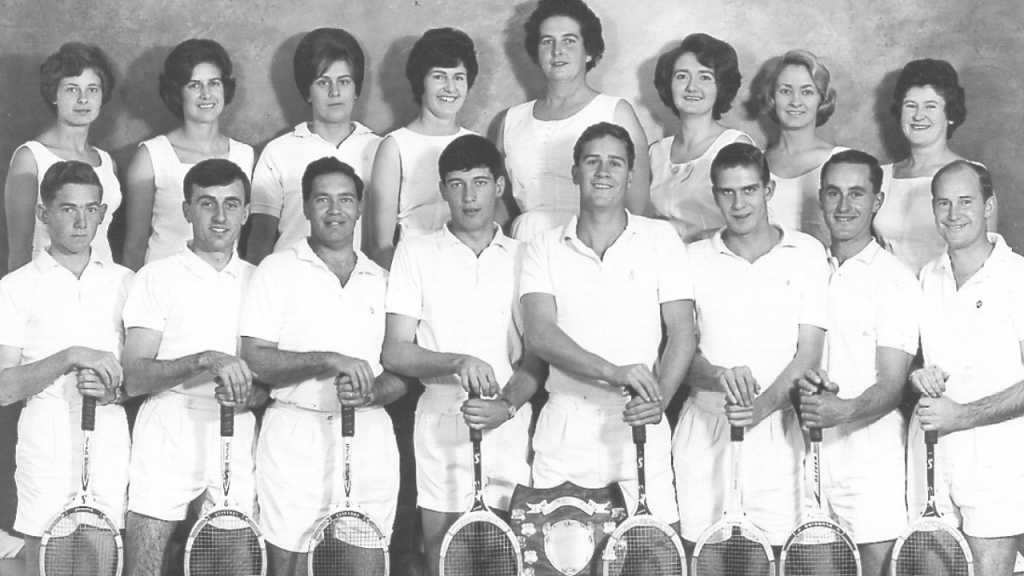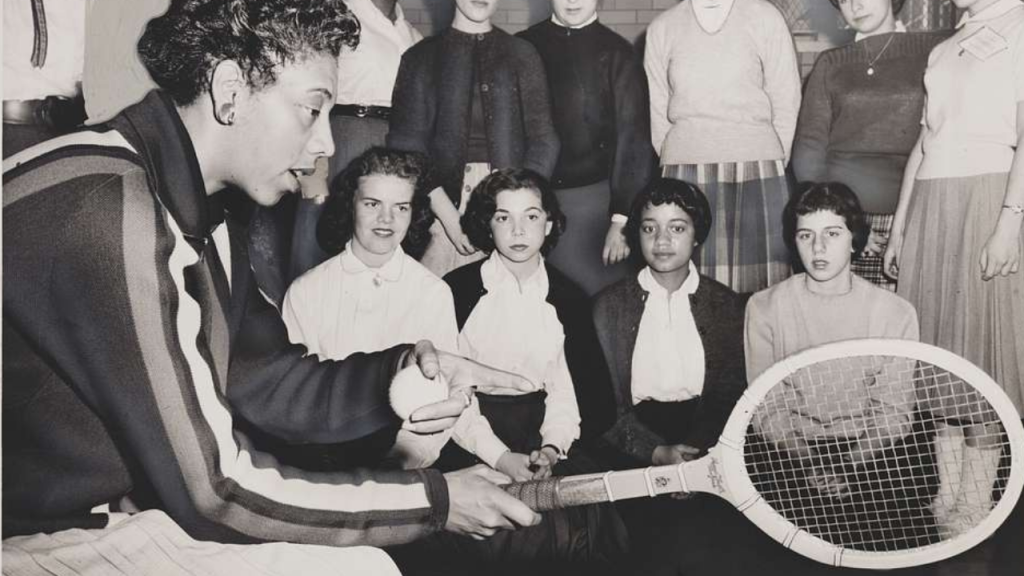Tennis History: Tennis is now the fourth most popular sport globally, with an estimated 1 Billon fans following the game.
Did you know that tennis has a long and rich history? It’s been around for centuries and has evolved significantly over the years. In this post, I’ll take you on a tour of the history of tennis, from its humble beginnings to the popular sport it is today. So whether you’re a tennis player or a fan, I think you’ll find this article interesting!
Tennis’s Ancient Origins
Some individuals claim that different versions of tennis were played by the ancient Egyptians, Greeks, and Romans. According to one hypothesis, the name tennis comes from the Egyptian town of Tinnis near the Nile, while the word racket comes from the Arabic word for the palm of the hand, rahat.
Aside from these two words, there isn’t much proof that tennis existed before 1000 A.D. Most historians attribute the game’s inception to French monks who played a courtyard game, hitting a ball back and forth with their hands off the courtyard walls over a rope strung across the middle. Tennis, unlike most sports, has a complicated scoring system.
The scoring method is thought to have originated in medieval France, and a clock face indicated the points. The hand was moved to the next quarter with every point scored (15, 30, 45). The game concluded when the first participant reached 60 points. However, this is a little odd, given that the scoring system is now 15, 30, and 40.
One possible reason for the disparity is that players needed to win by two points. Therefore the hand was moved to 40 and then 50, with the win arriving on the hour. Another explanation is that the scoring system was created to account for the number of yards traveled by the ball.
Today’s courts are 78 feet long, although, in the beginning, courts were 90 yards long, with 45 yards on each side. Players advanced 15 feet forward every time a player scored. Because the third point was scored with both players up at the net, the last point was made from 10 yards.
The History of ‘real’ Tennis
While Jeu de paume was occasionally referred to as “real tennis,” which is now closely associated with the modification of palm tennis in which participants struck the ball over the playing field with racquets. Real tennis evolved from the sixteenth through the mid-nineteenth centuries, becoming immensely popular in European royal courts.
Real tennis was so popular among royalty that it was directly linked to the deaths of King James I of Scotland (assassinated), Louis X (died of exhaustion), and Charles VIII (died of a head injury). Real tennis – one of several games sometimes called “the sport of kings” – is the original from which the modern game (also called “lawn tennis”) is derived.
It is also known as court tennis in the US, formerly royal tennis in England and Australia. Because of the sport’s prominence in France, King Charles the ninth established the Corporation of Tennis Professionals including three leagues in 1571. The first recorded rules of this real tennis league were issued in 1599.
Tennis grew in popularity across Europe during the seventeenth and first half of the eighteenth centuries, except for two countries: England, where Puritanism disapproved of such activity, and France, where the nobility came faced heavy criticism from disgruntled commoners. In the eighteenth century, England gradually drifted away from real tennis and toward lawn tennis, which evolved into what we now call modern tennis.
The History of Lawn Tennis
Tennis would regain popularity in the 1870s when the contemporary form evolved from the medieval version. There was a desire for games that the increasing middle-class could enjoy in the late 1800s and an increased interest in outdoor leisure activities.
Major Walter Clopton Wingfield, a Welshman with an enterprising spirit, created the modern version of tennis that could be played outdoors on a lawn known as Sphairistiké, derived from the Greek word sphairos, which means “ball.”
Wise friends advised him to modify the name to lawn tennis; thus, the game that closest resembles tennis today was formed. Lawn tennis allowed the game to be played on outdoor courts rather than the indoor courts that only the wealthy could afford. In 1874, Wingfield received a patent for a New and Improved Court for Playing the Ancient Game of Tennis.
He also created a new ball out of a newly found material, rubber, that could bounce high on the grassy courts. With the sport’s growing popularity and much to the satisfaction of entrepreneur Wingfield, a market for individuals to buy tennis equipment was developed.
The All England Croquet Club in Wimbledon, London, changed its name to the All England Croquet and Lawn Tennis Club in 1877, and the first significant tournament event, now known as “The Championships, Wimbledon,” was staged on the grass courts.
The History of The Davis Cup
The first Davis Cup was held in 1900 when the United States faced off against Great Britain, where the Americans stunned their opponents by surging to a safe 3:0 lead. The Davis Cub originated a few months earlier by 4 Harvard University tennis team players who wanted to organize a match between the US and the UK.
After the two national associations reached an agreement, one of the 4 players, Dwight Davis, developed a tournament format and purchased a trophy with his own money which led to the event being named the Davis Cup after Dwight Davis’s trophy.
The Davis Cup is now men’s tennis’s top international team competition. It is organized by the International Tennis Federation (ITF) and is played yearly in a knockout format between teams from competing nations.
The History of Women’s Tennis
The first lawn tennis court tournament, Wimbledon, began in 1877 as a fundraiser for one of the most prestigious tennis events in the history of tennis. The lawn tennis tournament was also the first Ladies’ Championship played in 1884.
The inaugural winner received a prize of 20 guineas. Not a lot compared to the $2.5 million that winners now get. Tennis has been popular among women in the US since its inception and was also introduced by a woman, Mary Ewing Outerbridge.
She was introduced to the game in Bermuda and took it back to the US. On Staten Island in 1874, Outerbridge and her sister Laura played the first tennis game ever played in the Americas.
The Origins of Pro Tennis
Tennis became so popular that it was included in the Olympic Games in Athens, Greece, in 1896, barely twenty-two years after the modern sport was established. In 1881 the very first US Open was played after the US founded The United States National Lawn Tennis Association.
However, tennis was not featured in the games until 1924, owing to conflicts between the (IOC) International Olympic Committee and the International Lawn Tennis Federation.

The Open Tennis Era Chapter
Prior to 1968, tennis was divided into two camps: amateurs, who competed in tournaments with no prize money, and professionals, whose sponsors paid for their appearances.
The pros were not permitted to compete in the Grand Slam competitions, which remained tennis’ Holy Grail, but the Grand Slams did not pay. At the time, the nobleness of the sport was considered more significant than anything else, and the consensus was that you didn’t need to win money to be considered a great champion.
From April 22 to 27, 1968, the first official tournament of this new period was staged in Bournemouth, England. Mark Cox, a British amateur, stood out. He defeated two professional tennis players: Roy Emerson and Pancho Gonzalez.
Cox did not win the championship; another star of the period, Ken Rosewall, defeated Rod Laver in the final. The organizers were pleased with the outcome. Ticket sales were six times higher than in previous years.
Political squabbles and legal battles for control of what had become a big-money sport plagued the transition years from quasi-amateurism to full-fledged professional tennis. Male and female players founded guilds, the Association of Tennis Professionals (ATP) for men and the Women’s Tennis Association (WTA) in 1986.
Tennis’s global broadcast on television increased the game’s popularity and influenced a more aggressive, athletic style of play. Tennis returned to the Olympics for the first time in 1988, marking the sport’s last significant change in the modern era.
Final Thoughts
Tennis has progressed from a recreational activity to a professional sport. It began with a wooden frame racquet and tennis balls and has evolved into a highly technologically complex game with a wide range of materials. It is perhaps one of the most international sports, with courts in practically every country.
Tennis’s widespread popularity is largely due to its marketing in the Olympics and on television, as well as the fact that the game is straightforward to learn and play. Tennis courts are still commonly included when parks are built, helping to promote the sport to youngsters from an early age.
The sport’s increasing amounts of prize money have surely influenced many people to take up the sport, where the diversity of players from different countries in big events is at an all-time high. The dynamic and fast-paced character of the sport undoubtedly contributes to its popularity.
FAQs
Who Invented the Tennis Ball?
In the 1850s, Charles Goodyear created the first “real” tennis ball. The original Goodyear ball was made entirely of rubber.
What Is the History of The Court in Tennis?
The rectangular court design of today’s modern tennis court began in 1875. The Wimbledon Championships are held at the All England Lawn Tennis Court & Croquet Club, originally known as the All England Croquet Club, before changing its name in 1880 to reflect the sport.
How Long Was the Longest Singles Match in Recorded Tennis History?
It took place over the course of three days and lasted 11 hours and 5 minutes. The final score of the 183 games in the match were 6-4, 3-6, 6-7 (7-9), 7-6 (7-3), and 70-68.
What Is the Shortest Match in The History of Tennis?
However, the shortest tennis match on record happened in 1946 between Jack Harper and J. Sandiford where Harper beat Sandiford in only 18 minutes.
What Is the Battle of The Sexes in Tennis?
The phrase is associated with a match between Billie Jean King and Bobby Riggs broadcast worldwide, where King ended up beating Riggs in three straight sets. The match was viewed by millions of people, while King’s triumph is deemed as a turning point in the public’s perception of women’s tennis.
Who Is the Youngest World Number 1 Tennis Player?
The youngest world number 1 tennis player was 16-year-old Martina Hingis in 1997. Martina became the youngest person in the “open” era to win a Grand Slam singles title and the youngest to be ranked world number one.
Who Was the First African American to Win a Grand Slam in Tennis?
Althea Gibson became the first black player to win in a Grand Slam tournament at the French Open, Roland Garros, in 1956. The amateur Arthur Ashe became the first African-American male to capture a Grand Slam event with his victory over Tom Okker of the Netherlands.

Who Has the Fastest Serve in Tennis?
Sam Groth of Australia hit the fastest serve to this day at a speed of 163.68 mph. Sabine Lisicki of Germany hit it at 130.49 mph, which is the fastest serve in the history of tennis on the women’s side.
Who Has Won the Most Consecutive Grand Slams?
Don Budge is the only player to have won six straight major singles tournaments, from his Wimbledon victory in 1937 to his US Open triumph in 1938.
Why Are Tennis Balls Yellow?
The court’s background color historically determined whether the ball was black or white. Tennis rules were changed to include yellow tennis balls in 1972 because studies had indicated that tv viewers could better see these balls. Wimbledon kept using the customary white ball but switched to yellow balls in 1986.
Who Beat the Big 3 in The Same Tournament?
The only tennis player to ever defeat Roger Federer, Rafael Nadal, and Novak Djokovic in the same tournament was the former pro David Nalbandian at the Madrid Masters event in 2007.
Christoph Friedrich is a German tennis player and coach currently residing in Oakland, California. He began his tennis journey at the age of eight and has since dedicated his life to the sport. After working as a tennis coach and hitting partner in New York City for eight years, Christoph decided to share his knowledge and experience with tennis players around the world by creating the My Tennis Expert blog. His goal is to make tennis education accessible to everyone and help players select the best equipment for their game, from racquets and strings to shoes and overgrips. Christoph's extensive research and expertise in tennis technology make him a valuable resource for players of all levels.

